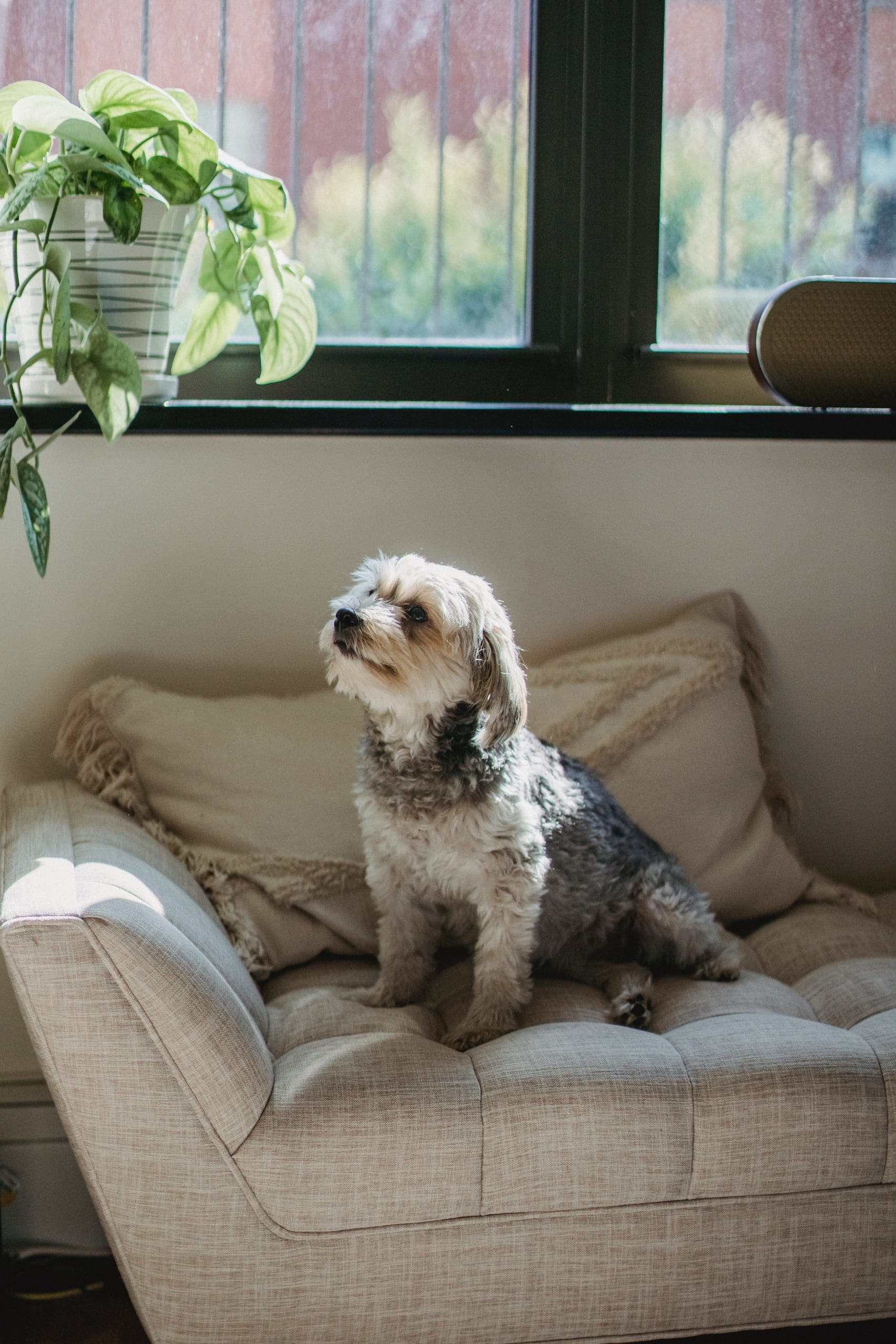Many dog owners encounter the challenge of separation anxiety in their pets, a condition that can lead to distress for both dogs and their owners. Helping a dog with separation anxiety is essential for ensuring its well-being and maintaining a peaceful home.
Recognizing the Symptoms
Separation anxiety manifests when a dog becomes overly attached to its owner, resulting in extreme distress when left alone. Symptoms vary widely and can include excessive barking, whining, and destructive behaviors like chewing furniture or digging at doors. These actions stem from fear and insecurity, making it crucial for pet owners to approach the situation with compassion.
Common signs of separation anxiety include:
– Pacing
– Drooling
– Excessive barking
– Attempts to escape
– Destructive behavior
– Accidents in the house, even in house-trained dogs
– Excessive licking or grooming
Identifying these behaviors is vital for understanding when a dog is struggling.
Identifying the Root Causes
The underlying causes of separation anxiety differ among dogs. Traumatic experiences, such as abandonment or loss of an owner, can trigger anxiety. Changes in routine, like moving to a new home or the arrival of a new family member, may also contribute. Some dogs may be predisposed to anxiety due to their temperament or breed. Recognizing these factors helps in tailoring supportive strategies.
Creating a Safe Space
Establishing a secure environment is fundamental in addressing separation anxiety. Dogs thrive in spaces where they feel safe. Designating a specific area in the home for your dog to relax, equipped with favorite toys, a comfortable bed, and an item of your clothing, can provide comfort during anxious moments.
Gradual Desensitization Techniques
Gradual desensitization is an effective method for helping dogs cope. This involves slowly acclimating the dog to being alone for short periods, then gradually increasing the time apart. Start by leaving the dog alone for just a few minutes, then return and offer praise and reassurance. Over time, extend the duration of absences to help the dog associate departures with positive experiences.
Establishing a Routine
A consistent routine significantly aids in alleviating separation anxiety. Dogs thrive on predictability, so having a regular schedule for feeding, walks, playtime, and quiet time can reduce stress. This consistency fosters a sense of security, allowing the dog to know what to expect throughout the day.
Engaging Physical and Mental Stimulation
Engaging your dog in physical exercise and mental stimulation can greatly reduce anxiety levels. A tired dog is often a more relaxed dog. Regular walks, play sessions, and interactive toys keep dogs active. Incorporating puzzle toys that dispense treats or engaging in training exercises can alleviate boredom and strengthen the bond shared with your pet.
Utilizing Positive Reinforcement
Positive reinforcement training is crucial in addressing separation anxiety. Rewarding calm behavior during departures and arrivals helps dogs associate these moments with positive experiences. Use treats, praise, or toys as rewards, and maintain a calm demeanor, as your emotions can influence how your dog feels.
Seeking Professional Help
In severe cases, professional assistance may be necessary. If a dog’s separation anxiety does not improve with at-home strategies, consulting a veterinarian or a certified animal behaviorist can provide tailored recommendations. This may include behavioral therapy or, in certain situations, medication to manage anxiety.
Combining Medication with Behavior Modification
When medication is warranted, it should not be viewed as a standalone solution. Combining prescribed treatments with behavioral modifications and training techniques can yield significant improvements in a dog’s behavior.
Prevention Strategies
Prevention plays a vital role in managing separation anxiety. Early socialization is crucial for puppies; exposing them to various environments, people, and animals fosters confidence. Teaching dogs to enjoy being alone from a young age sets the foundation for well-adjusted adult dogs.
Practicing short separations helps dogs acclimate. Start by leaving a puppy alone for brief moments, gradually increasing the time apart as they become more comfortable. This practice can help prevent anxiety from developing.
Addressing Anxiety in Older Dogs
For older dogs that suddenly develop separation anxiety, assessing changes in their environment or routine is essential. Cognitive decline or health changes in aging dogs may contribute to anxiety. Regular veterinary check-ups can help identify underlying medical issues requiring attention.
Creating Positive Departures
Building positive associations with departures can alleviate anxiety. Engage in a fun activity, like fetch or a training session, before leaving. This helps dogs associate departures with enjoyable experiences. Consider providing special toys or treats that they only receive during your absences, creating a rewarding experience.
Using Calming Products
Incorporating calming products can further support efforts to alleviate separation anxiety. Various items, like calming collars, pheromone diffusers, and anxiety wraps, can offer additional comfort and security during stressful moments.
Emphasizing Patience and Consistency
Patience and consistency are vital in alleviating separation anxiety. Adjusting to being alone may take time, so celebrate small victories along the way.
Helping a dog with separation anxiety requires empathy and a multifaceted approach. Recognizing signs, creating a safe environment, establishing a routine, and providing mental and physical stimulation significantly improve a dog’s well-being. Each dog is unique, and effective strategies may vary. With time, patience, and care, you can help your dog feel more secure and content when apart.



